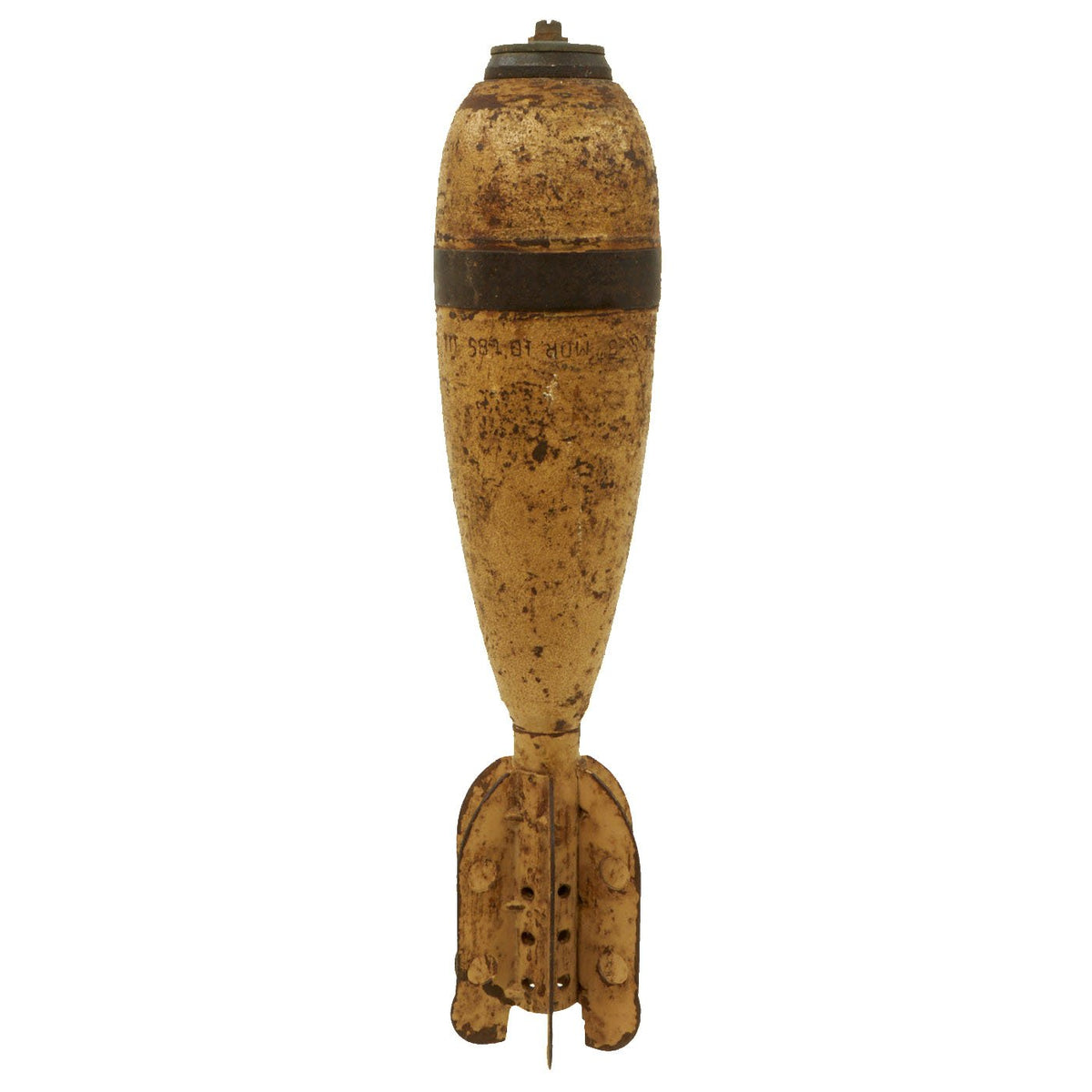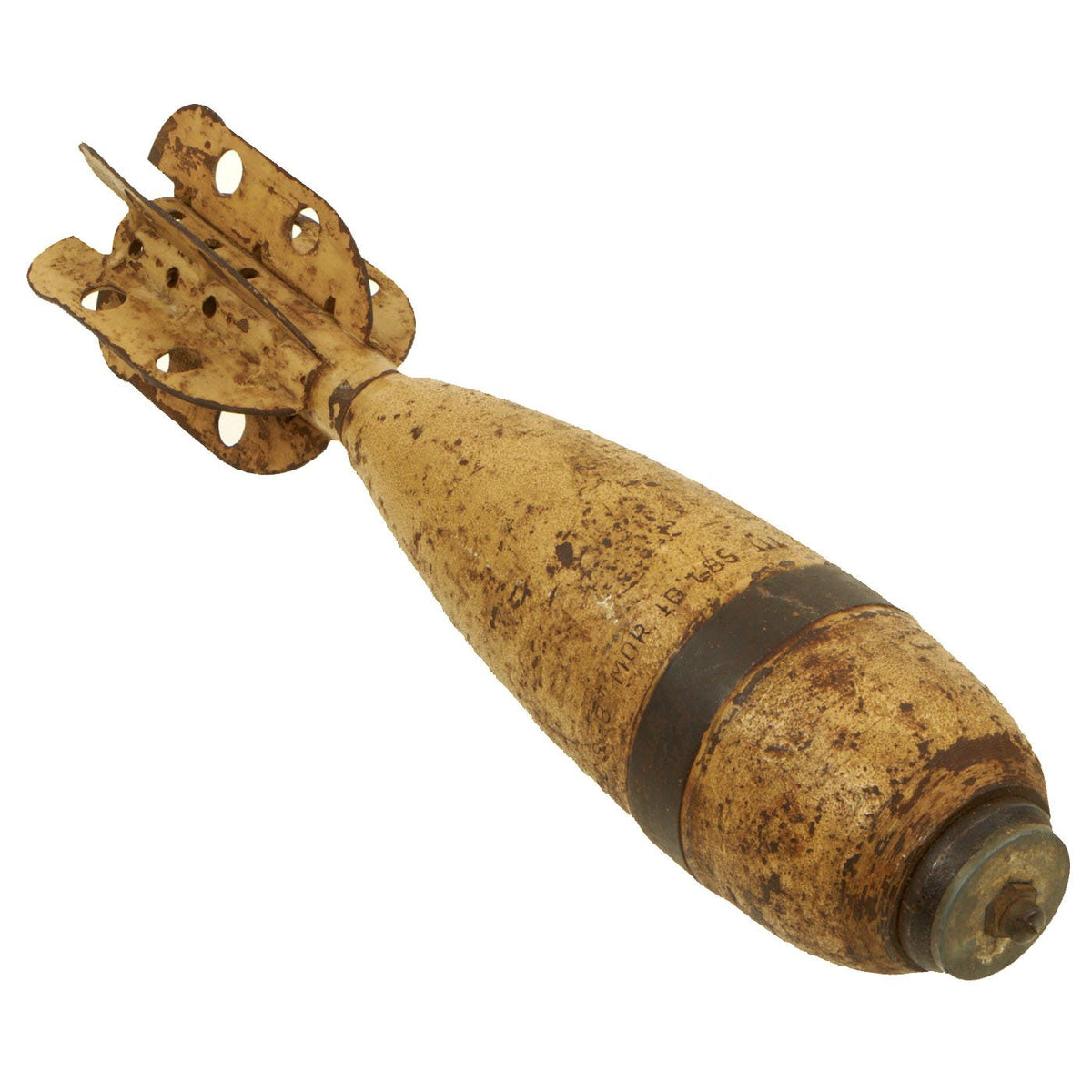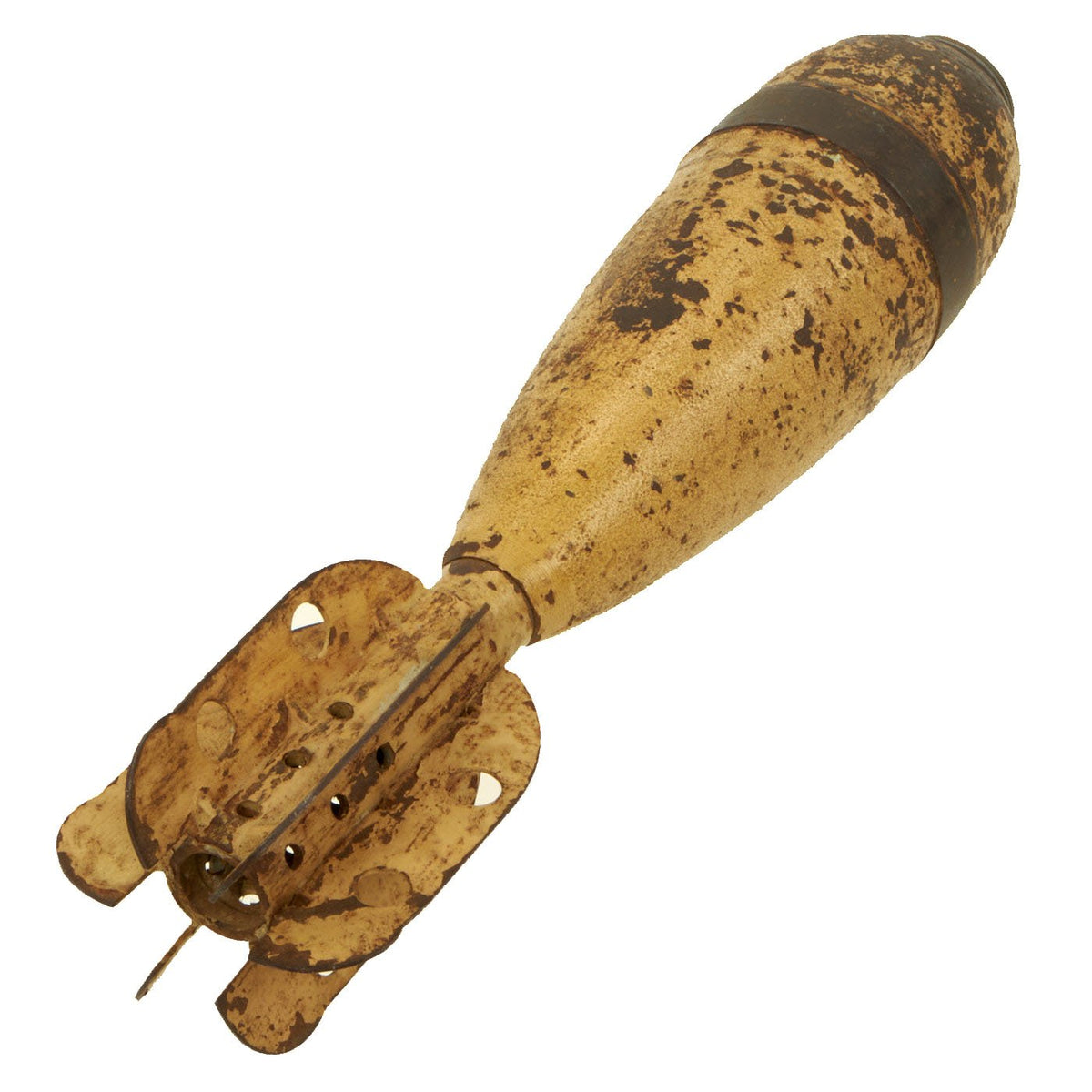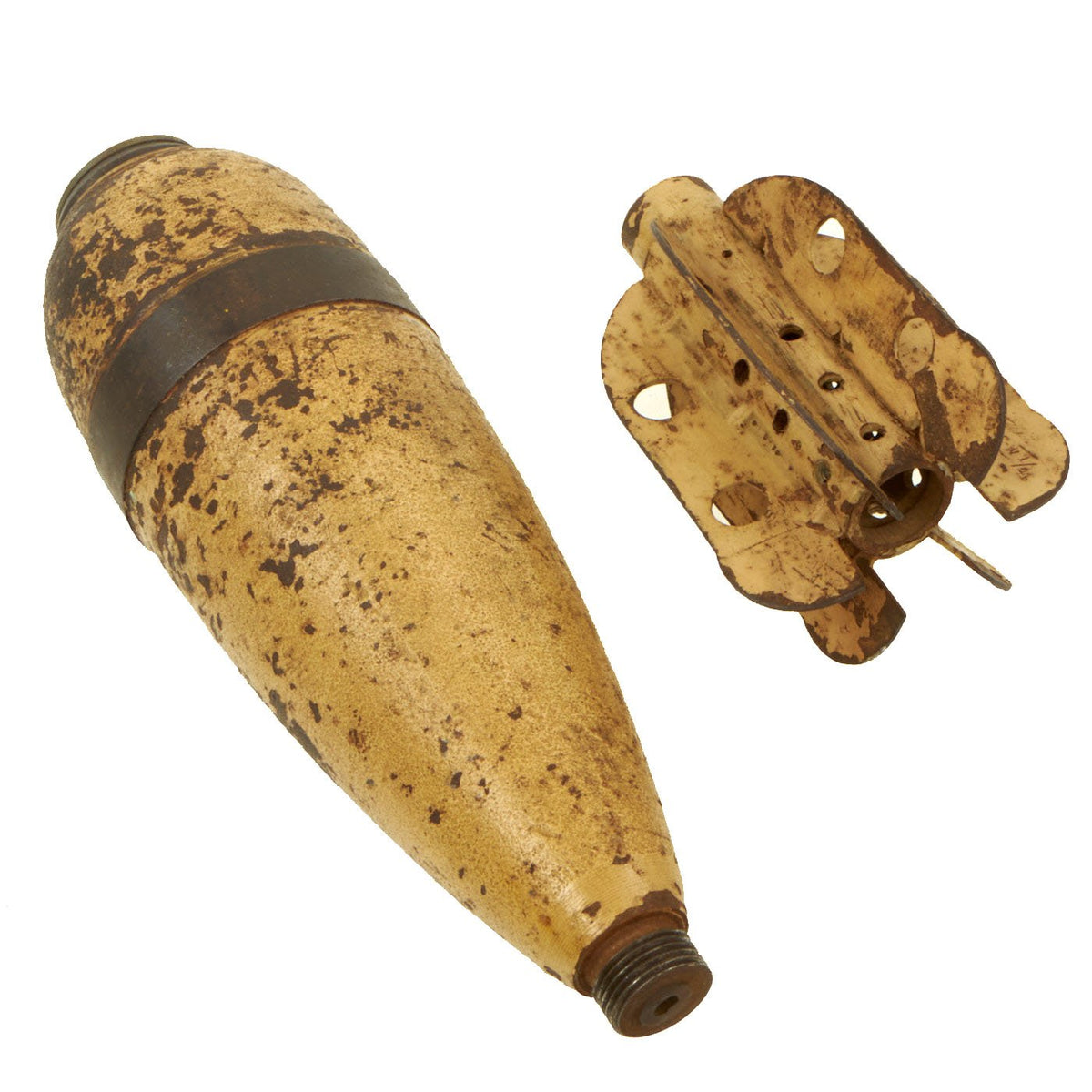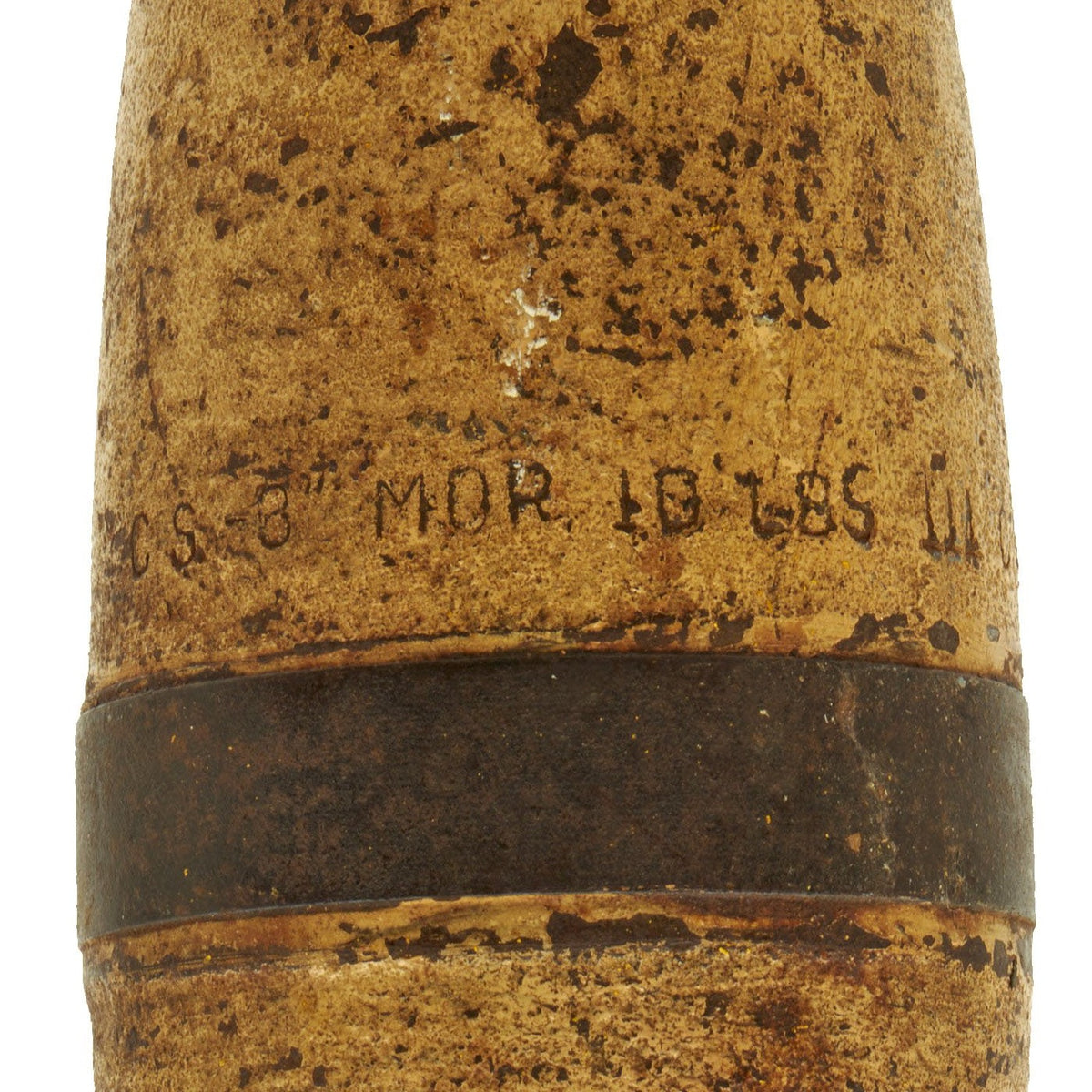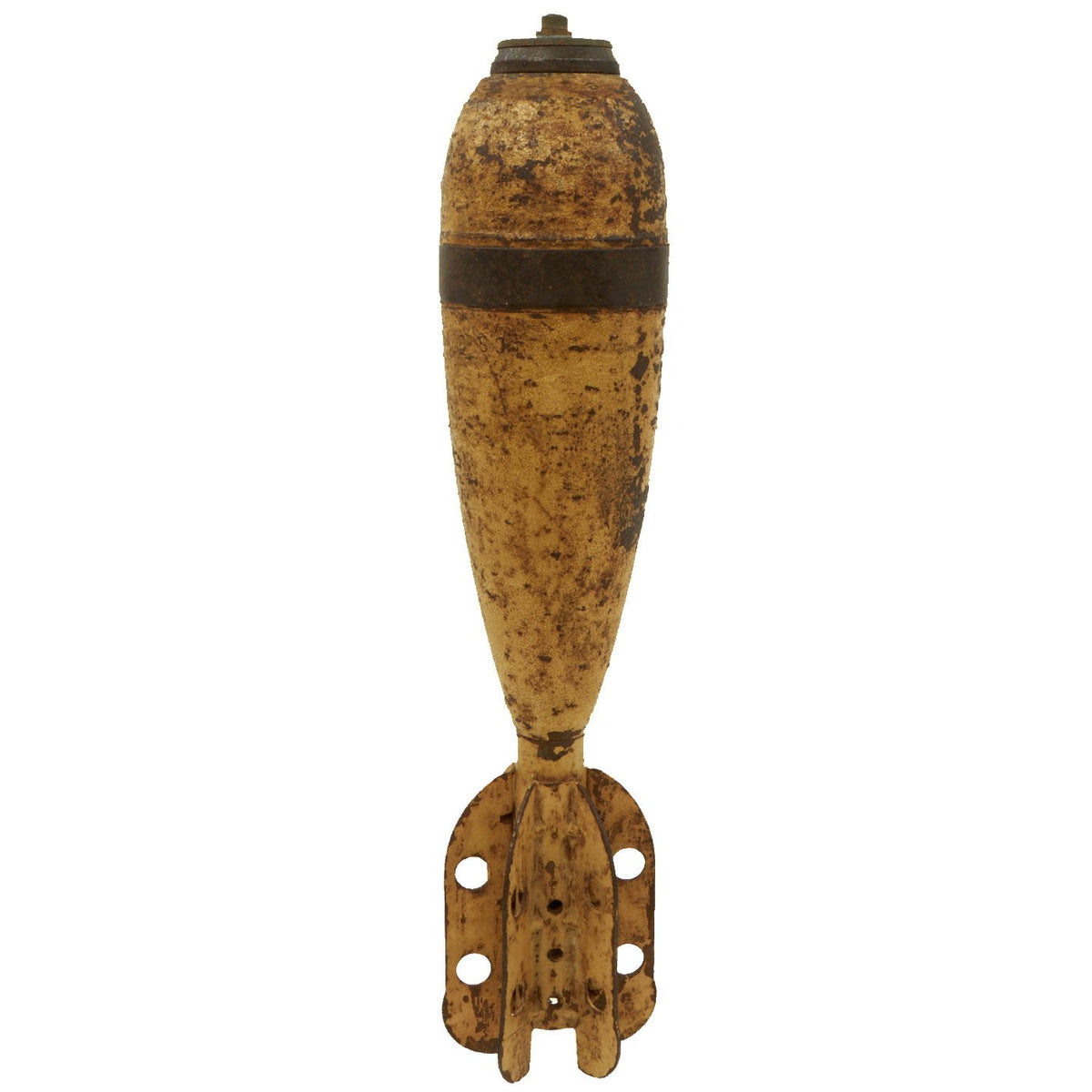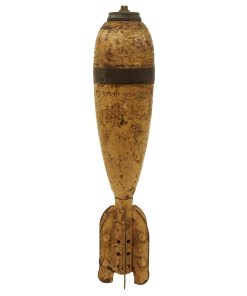Original British WWII Ordnance ML 3-Inch Mortar 10lb. Inert Round – Dated 1941 Original Items
$ 375,00 $ 112,50
Original Item: Only One Available. Totally inert per guidelines provided by the Bureau of Alcohol Tobacco and Firearms (ATF) this is a very nice WWII-dated example of an Inert Round for the British British Ordnance ML Three-Inch Mortar. The propellant and explosive charge have been removed and the fuse deactivated, making this totally inert, and unable to be converted into an explosive device.
This example is in very good condition, and the bottom fins still correctly unscrew. The top of the mortar round, or bomb, has the original top plug still installed, which would then be removed when the fuze was to be installed. It can still be removed to show the internal explosives cavity.
The mortar round still has original markings, stamped into the body next to the gas check band / obturating ring:
C S – 3″ MOR. 10 LBS 111 CW 3 / 41
There is also a maker mark and date stamped into one of the fins: C-W 1/41. There are no other markings that we can see. The body looks to have suffered some corrosion, and then was painted tan post war. This unfortunately removed the original paint markings, which would have identified the exact time of shell / round that it is. Measures about 15 inches long by 3 inches wide.
These are quite rare, and this is the first example that we have had. Ready to display!
More on the British ML 3-Inch Mortar:
The Ordnance ML 3-inch mortar was the United Kingdom’s standard mortar used by the British Army from the early 1930s to the late 1960s, superseding the Stokes mortar. Initially handicapped by its short range compared to similar Second World War mortars, improvements of the propellant charges enabled it to be used with great satisfaction by various armies of the British Empire and of the Commonwealth.
Based on their experience in the First World War, the British infantry sought some sort of artillery for close support. The initial plan was for special batteries of artillery, but the cost was prohibitive and the mortar was accepted instead.
The Mark II mortar (Mark I was the Stokes) was adopted by the British Army in the early 1930s; and this was the standard British mortar when the Second World War broke out in September 1939. Experience in the early part of the war showed that, although the Mark II was reliable and sturdy, it did not have sufficient range compared to the German 81 mm s.GW.34 mortar. A series of experiments and trials using new propellants improved the range from 1600 yards to 2800 yards by about 1942; and, by 1943, the barrel, baseplate and sights had also been improved. Although called the ‘3-inch mortar’ by the British Army, its calibre was actually 3.209 in (81.5 mm).
The ML 3-inch mortar was carried on three packs by infantry or on Universal Carriers. The Mark II remained in service with the British Army until replaced by the L16 81mm mortar in 1965.
Fast Shipping with Professional Packaging
Thanks to our longstanding association with UPS FedEx DHL, and other major international carriers, we are able to provide a range of shipping options. Our warehouse staff is expertly trained and will wrap your products according to our exact and precise specifications. Prior to shipping, your goods will be thoroughly examined and securely secured. We ship to thousands clients each day across multiple countries. This shows how we're dedicated to be the largest retailer on the internet. Warehouses and distribution centres can be located throughout Europe as well as the USA.
Note: Orders with more than one item will be assigned a processing date depending on the item.
Before shipping before shipping, we'll conduct a thorough inspection of the items you have ordered. Today, the majority of orders will be delivered within 48 hours. The delivery time will be between 3-7 days.
Returns
The stock is dynamic and we cannot completely manage it because multiple stakeholders are involved, including our factory and warehouse. So the actual stock may alter at any time. It's possible that you may not receive your order once the order has been made.
Our policy is valid for a period of 30 days. If you don't receive the product within 30 days, we are not able to issue a refund or an exchange.
You can only return an item if it is unused and in the same state as the day you received it. You must have the item in its original packaging.
Related products
Uncategorized
Australian WWII Owen MK1 Machine Carbine SMG Custom Fabricated Replica with Sling Original Items
Uncategorized
Uncategorized
Band of Brothers ORIGINAL GERMAN WWII Le. F.H. 18 10.5cm ARTILLERY PIECE Original Items
Uncategorized
Armoured Fighting Vehicles of the World: AFVs of World War One (Hardcover Book) New Made Items
Uncategorized
Angolan Rebel 1970s era 60mm Inert Display Mortar from Angolan Civil War Original Items
Uncategorized
Uncategorized
Uncategorized
Uncategorized
Uncategorized
Uncategorized
Uncategorized
Uncategorized
Uncategorized
Armored Burgonet Helmet & Polearm from Scottish Castle Leith Hall Circa 1700 Original Items
Uncategorized
Uncategorized
Uncategorized
Uncategorized
